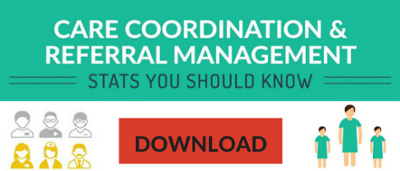
Former President Barack Obama and former Vice President Joe Biden both care a great deal about digital health technology systems. Even when they had less than two weeks left in the White House, physicians' ability to share patient health records digitally was top of mind — and on the same day, too!
According to Politico’s Morning eHealth newsletter, it was “the first time since the gods called this newsletter into existence [that] President Barack Obama and Vice President Joe Biden both talked on the same day about health IT”.
During a talk about Obamacare, former President Obama expressed regret that the Affordable Care Act did not get more doctors off paper and onto digital medical records. “If you think about how wired and plugged in everyone is right now — you can basically do everything off your phone — the fact that there are still mountains of paperwork and...doctors still have to input stuff and the nurses are spending all their time on the administrative work.”
Barack Obama thinks the reason why healthcare still has these problems—too much paperwork and too much extra administrative work—is because “it’s decentralized and everyone has different systems.”
Former Vice President Biden had similar concerns at a Cancer Moonshot meeting with electronic health records (EHR) executives on the same day in January when Obama made his comments about digital medical records. The former United States VP was visibly emotional when he complained about how electronic health records (EHR) systems “don’t share very well once you get outside [the systems]...You guys in the healthcare industry are the least sharing people in the world.”
According to a CSPAN video, Biden was so emotional because his deceased son Beau ran into problems with healthcare records interoperability when Beau was a cancer patient. “I was stunned when my son, for a year, was battling glioblastoma. I couldn’t get his records. I’m the Vice President of the United States...we couldn’t get his records...it was an absolute nightmare. And ridiculous. Absolutely ridiculous that we were in that circumstance…”
Joe Biden assured the crowd at the January meeting that he is “deadly earnest and deadly frustrated” about solving healthcare records interoperability issues. He even jokingly (or not?) threatened to have the Secret Service lock the EHR executives in the meeting room until they came up with solutions.
Electronic referral management to the rescue
For primary care practices that refer patients to specialists who use different electronic records systems, there is already a solution to the problems outlined by former President Obama and former Vice President Biden: electronic referral management. With electronic referral management, it doesn’t matter what EHR your practice uses because patient information is sent seamlessly from a PCP to a specialist and specialist consultation reports are sent seamlessly back to the PCP after appointments are completed. This allows physicians have patient records when they need them most.
Specialists offices don’t have to waste time contacting the PCP office and manually requesting additional information when they use e-referral systems. “It's much easier - the old way had a long lag time of having to contact the office and request it”, says a physical therapy practitioner in Pittsburgh whose office uses electronic referral management. “The idea of working like this with these PCP groups is excellent - we need to do this”
Streamlined referrals also helps PCP offices provide better, faster care. “If we need to get someone in ASAP within 72 hours, we no longer have to waste 15-20 mins to get someone from the office on the phone”, according to a referral coordinator at a primary care practice in Pittsburgh.
Do you have the systems in place to beat care coordinations' top challenges?
Good Health IT vs Bad Health IT
A leading health informatics expert, Scot M. Silverstein, M.D., outlined the difference between “Good Health IT” and “Bad Health IT” systems.
Good Health IT ("GHIT") is defined as IT that provides:
- a good user experience
- enhances cognitive function
- puts essential information as effortlessly as possible into the physician’s hands
- can be easily, substantively and cost-effectively customized to the needs of medical specialists and subspecialists
- keeps eHealth information secure
- protects patient privacy
- facilitates better practice of medicine and better outcomes
Bad Health IT ("BHIT") is defined as IT that:
- is ill-suited to purpose
- hard to use
- unreliable
- loses data or provides incorrect data
- is difficult and/or prohibitively expensive to customize to the needs of different medical specialists and subspecialists
- causes cognitive overload
- slows rather than facilitates users
- lacks appropriate alerts
- creates the need for hypervigilance (i.e., towards avoiding IT-related mishaps) that increases stress
- is lacking in security
- compromises patient privacy
- otherwise demonstrates suboptimal design and/or implementation
Electronic referral management with analytics, automation, and seamless connectivity meets every criteria for Good Health IT. With e-referral systems that work across different EHR systems, practices achieve patient care coordination goals, save staff administration time, and reduce faxing and other paper processes - every health records system goal outlined by President Obama and Vice President Biden. If health records system were like high-performance referral management systems, there would be no need to lock a bunch of healthcare executives in a room to solve any problems - the problems would already be solved!



